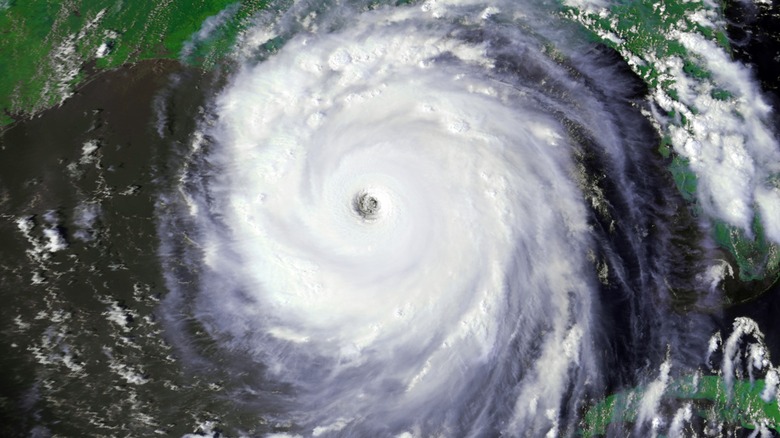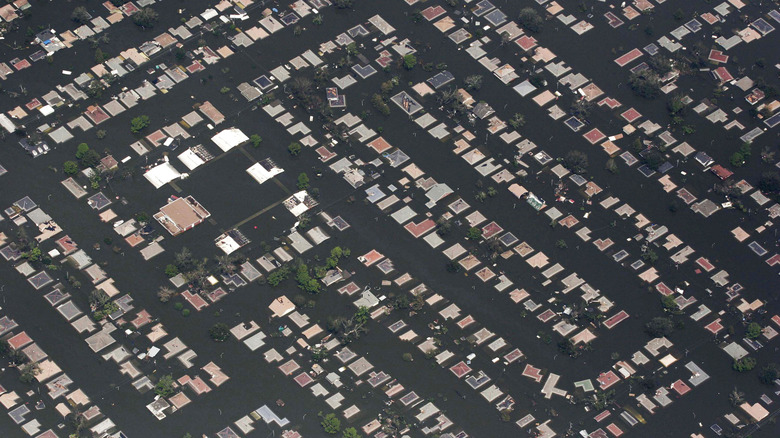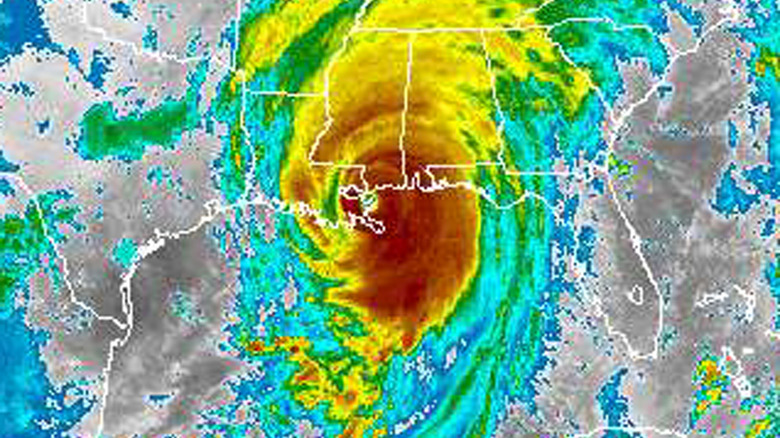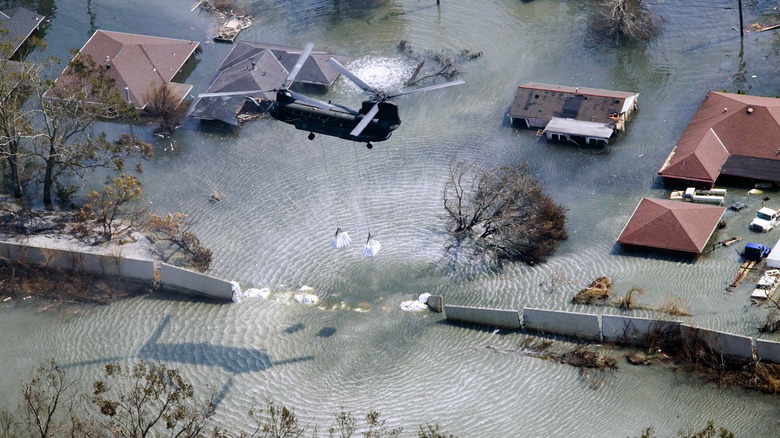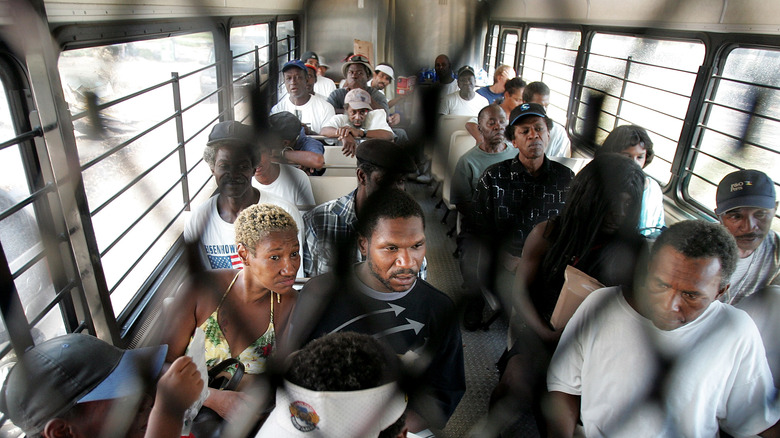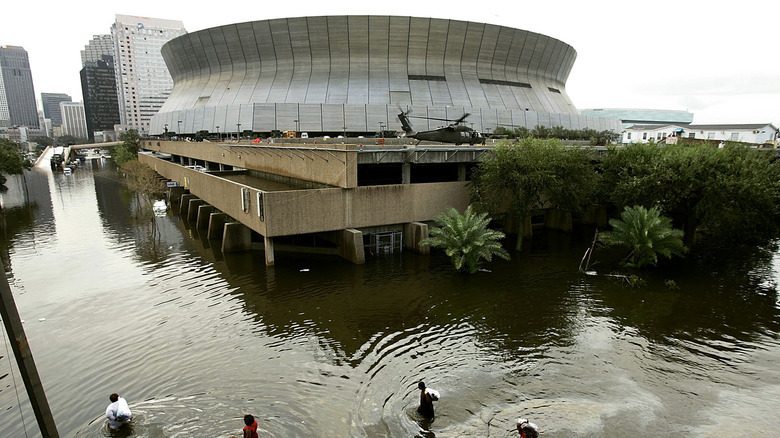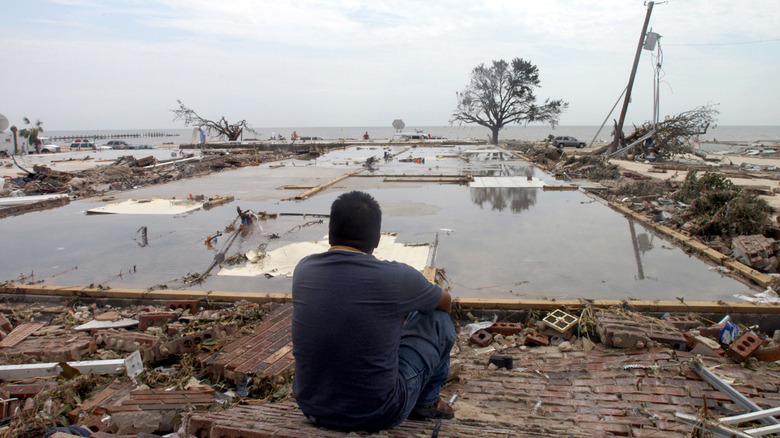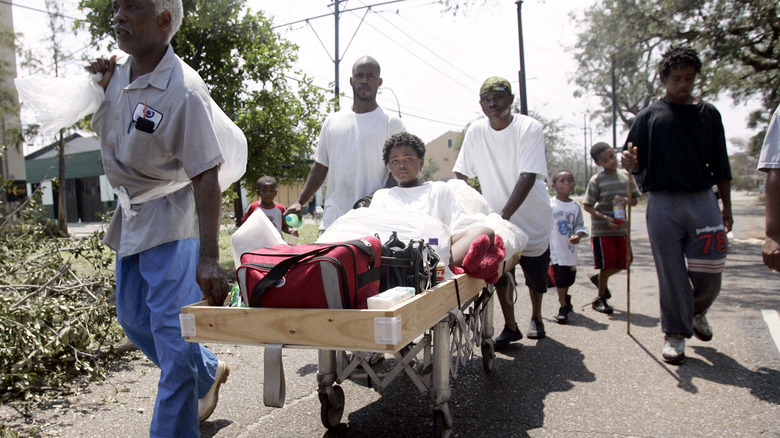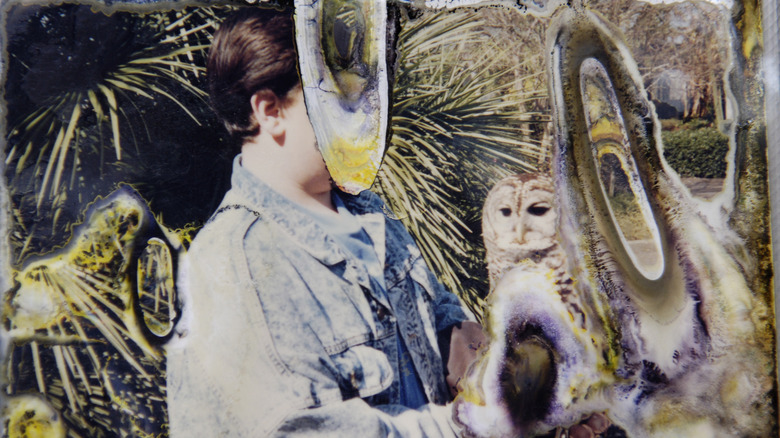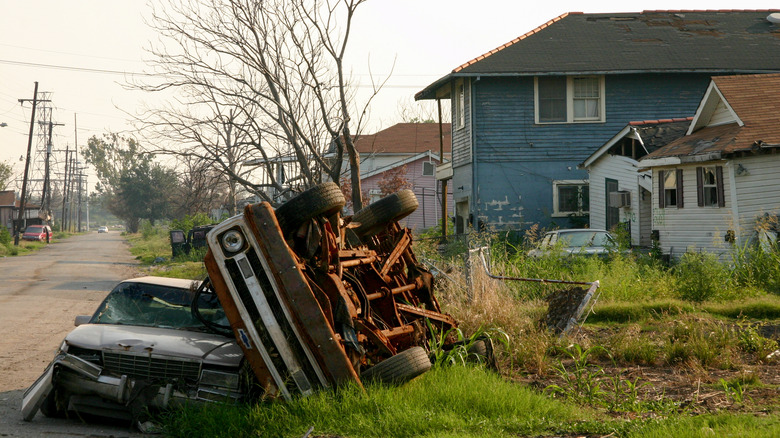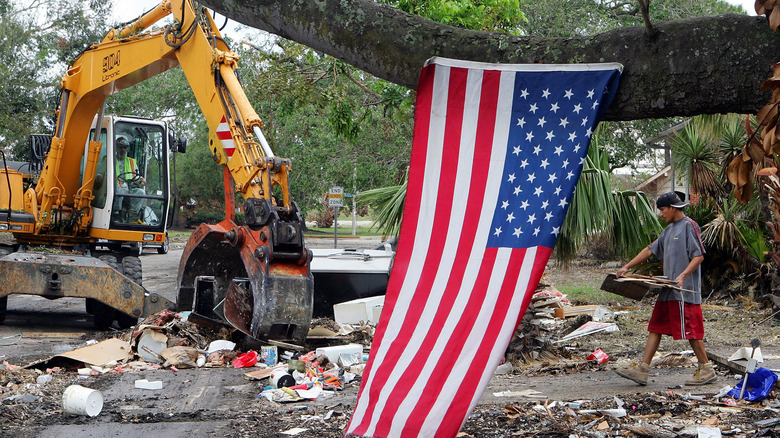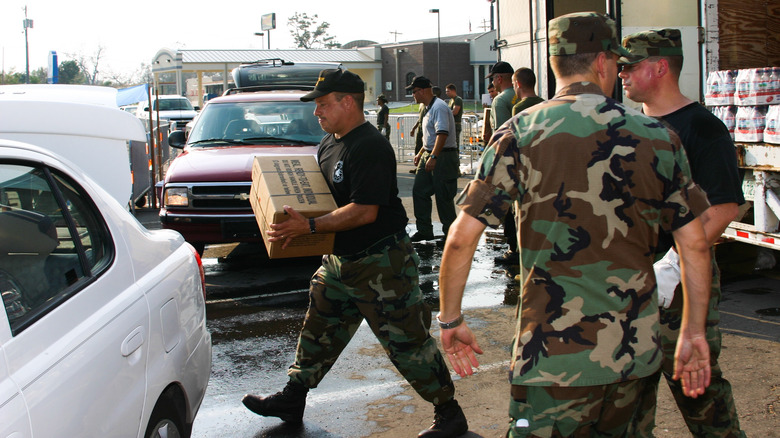Messed Up Things That Happened During Hurricane Katrina
As far as natural disasters go, Hurricane Katrina was a bad one. Unfortunately, it was made significantly worse than it had to be. Most of the tragedies associated with Hurricane Katrina could have been avoided, but due to a variety of reasons, the hurricane quickly became one of the worst disasters to ever occur in the United States.
In many ways, the horrors of Hurricane Katrina were also exaggerated and in turn led to additional tragedies, such as the police shootings of unarmed residents and subsequent cover-up on Danziger Bridge. As a result, the rumors of lawlessness in New Orleans actually made things much worse for stranded survivors.
Many wonder if New Orleans can handle another Katrina. Although the rebuilt levees are supposed to protect the city against a flood with a severity that comes every 100 years, the flood brought by Hurricane Katrina was one that, in theory, comes once every 400 years. In addition, many of the underlying systemic inequalities and problems that resulted in the severity of the disaster still have not been addressed. These are some messed up things that happened during Hurricane Katrina.
What was Hurricane Katrina?
Hurricane Katrina was a 2005 storm that affected the southeast coast of the United States. Although Louisiana and Mississippi were most heavily affected, Alabama, Florida, and Georgia also suffered casualties due to the disaster. Hurricane Katrina reached Category 5 strength in the Gulf Coast, and although it was a Category 3 when it made landfall, it was still one of the "worst disasters in U.S. history," according to World Vision.
National Geographic writes that the storm hit the coast of Louisiana on August 29 and ended up affecting up to 90,000 square miles of land and over 15 million people. And although hurricanes are usually only 300 miles wide at most, Hurricane Katrina's winds stretched out over 400 miles, with wind speeds well in excess of 100 mph.
Experts don't know exactly how many people lost their lives during Hurricane Katrina, but 1,800 is one of the low estimates, and over 1 million people lost their homes and were displaced. The National Weather Service writes that Hurricane Katrina is "one of the five deadliest hurricanes to ever strike the United States."
Hurricane Katrina caused up to $161 billion worth of damage, largely due to the fact that the breached levees led to flooding in 80% of New Orleans. The outer ends of the hurricane also produced tornados, although they only damaged power lines and trees.
'Long-term warnings' were ignored
After Hurricane Katrina struck, numerous federal officials, including President George W. Bush, claimed that there was little that could have been done to prevent the disaster. According to ABC News, it was claimed that "the levee breaches could not have been foreseen" and that the government had little warning before the hurricane. But subsequent investigations revealed that not only was there prior knowledge that the storm was going to hit but that "long-term warnings went unheeded and government officials neglected their duties to prepare for a forewarned catastrophe," according to the Senate Committee on Homeland Security and Governmental Affairs.
NPR reports that before Hurricane Katrina made landfall, "Homeland Security Secretary Michael Chertoff, FEMA Director Michael Brown and other top Homeland Security officials received emails on their blackberries warning that Katrina posed a dire threat." However, little to nothing was done by FEMA in response. And although President Bush said on September 1, "I don't think anyone anticipated the breach of the levees," days before Hurricane Katrina hit New Orleans, the White House was informed that the levees were likely to overtop and breach.
In 2004, the federal government sponsored a "planning exercise" involving local, state, and federal officials that resembled the eventual impact of Hurricane Katrina. However, "many of its admonitory lessons were either ignored or inadequately applied." And despite the fact that many were long voicing their concerns about the effects of a hurricane in New Orleans, they were ignored until it was too late.
Why did the levees fail?
Most of the damage caused by Hurricane Katrina was due to the fact that New Orleans' levees and floodwalls were breached. However, this didn't happen because the storm was too strong — it happened due to the failures of the U.S. Army Corps of Engineers.
The Washington Post reports that not only did the Corps cut costs and pinch pennies in order to save money in the short term, but the engineering of the levees was "a disjointed fashion based on outdated data" (via Vox). Engineers also didn't consider sinking land and soil quality, which led to a misjudgment of soil stability.
Although there was a "maintenance regime" theoretically in place for the levees, the Senate committee found that it was "in no way commensurate with the risk posed to these persons and their property." This also disproportionately affected people of color. According to Talk Poverty, "a Black homeowner in New Orleans was more than three times as likely to have been flooded as a white homeowner."
Socialist Alternative writes the budget of the Crops was slashed after 2003, largely to pay for the Iraq War and tax cuts for the wealthy: "A refusal to invest tens of millions of dollars into strengthening levees has led to a catastrophe that will cost hundreds of billions of dollars." Because of this shortsightedness, Hurricane Katrina was "the nation's first $200 billion disaster."
Lack of hurricane evacuation plans
Although up to 1.7 million people were evacuated in Louisiana alone, hundreds of thousands of people were stranded during the hurricane. And as Vox writes, this wasn't necessarily by choice "but rather because they were too poor to afford a car or bus fare to leave." And since the hurricane evacuation plan stipulated that "the primary means of hurricane evacuation will be personal vehicles," according to "Hurricane Katrina: A Nation Still Unprepared" (the Senate committee's report), this left the state's most impoverished and vulnerable families, the large majority of whom were people of color, without anywhere to go as Hurricane Katrina hit.
In New Orleans, the evacuation plan reportedly "fell apart even before the storm hit." Those without cars were in theory going to be picked up by city buses at stops throughout the city and taken two hours north of New Orleans. But the day before the hurricane hit, with the roads jammed with the vehicles of a million fleeing residents, the city of New Orleans decided to house people in the Superdome temporarily. Only after Katrina passed were people going to be bussed to shelters.
But after the levees broke, the city buses went underwater. As a result, thousands of people became stranded at the Superdome, while thousands more ended up on the roofs of their homes as floodwaters reached heights of 20 feet.
Deaths in the Superdome
Between 20,000 and 30,000 people in New Orleans were evacuated to the Mercedes-Benz Superdome. And despite the fact that this was meant to be a temporary shelter, they ended up being stranded in the stadium for a week.
Initially, the Superdome was described as a "lawless, depraved, and chaotic" place, with reports of numerous murders. However, it was later found that despite the poor conditions in the Superdome, "it was not the murderous hellhole" it was reported to be. The Society Pages writes that there were six deaths in the Superdome: one by suicide, one by overdose, and four from natural causes. NBC News reports that although there were stories of freezers full of bodies, "no such pile of bodies was [ever] found."
Unfortunately, due to the sensationalist stories regarding the Superdome, the rumors were used to justify "turn[ing] New Orleans into a prison city," according to The Guardian.
Despite the fact that the Superdome became the city's "refuge of last resort," it was woefully inadequate for housing the thousands of evacuees. The backup generator for the lights was barely able to be kept afloat, and after the water supply gave out, the toilets "became inoperable and began to overflow." With the failure of the air conditioning, temperatures inside the Superdome reached the high 90s, with heavy humidity. The food inside the freezers had soon rotted, and "the smell was inescapable."
More than half the victims of Hurricane Katrina were elderly
Out of the at least 1,800 deaths caused by Hurricane Katrina, nearly half were elderly people. And it's possible that the deaths may have even numbered as high as 10,000. The White House writes that by February 2006, there were still over 2,000 people who were counted as missing, and many are still missing over 15 years after the storm.
According to NBC News, the average age of victims was 69, and "just under half of all victims were 75 or older." The Social Science Research Council writes that this disparity occurred because elderly people were neither evacuated nor protected effectively. This was especially clear in the poor evacuations of nursing homes. In the United States, Louisiana has the "highest rate of beds per 1,000 persons ages 85 or more," but over half of the nursing homes in New Orleans decided against early evacuation.
Across 13 nursing homes and six hospitals that were investigated in Louisiana, at least 140 patients died as a result of Hurricane Katrina. At St. Rita's Nursing Home, residents were reportedly abandoned by the staff, and 35 people drowned as a result. The owners, Salvador and Mabel Mangano, ended up facing the only criminal charges directly related to Hurricane Katrina, as they were charged with negligent homicide due to their refusal to evacuate their residents. They were acquitted in 2007.
Environmental racism
Everyone remembers Kanye West's infamous comment that "George Bush doesn't care about Black people," but the issue ran far deeper than just the feelings of the president. The fact that Black homeowners were more likely to face flooding than white homeowners wasn't an accident or bad luck. As Talk Poverty notes, it was directly due to "racially discriminatory housing practices," which meant that "the high-ground was taken by the time banks started loaning money to African Americans who wanted to buy a home."
As a result, according to ESRI, most minority communities ended up living in neighborhoods that were cheaply built and in areas more susceptible to flooding. And as Rob Nixon notes in "Slow Violence, Neoliberalism, and Environmental Picaresque," "Discrimination predates disaster: in failures to maintain protective structures, failures at pre-emergency hazard mitigation, failures to maintain infrastructure, failures to organize evacuation plans for those who lack private transport, all of which make the poor and racial minorities disproportionately vulnerable to catastrophe." Meanwhile, in the Senate committee report, race isn't mentioned once in over 700 pages.
In the aftermath of Hurricane Katrina, Black families have also had a harder time rebounding than white families. According to FiveThirtyEight, the Black middle class in particular was all but wiped out, and Black household incomes have fallen. The Black population of New Orleans has also fallen, since out of the 175,000 Black residents who left New Orleans, over 75,000 never returned.
Losing track of foster children
Before Hurricane Katrina hit Louisiana, there were roughly 2,000 foster children registered in the state. According to PBS, two weeks after the storm, 25% of the children remained unaccounted for. Up to a month after Hurricane Katrina, over 100 children were still unaccounted for, and it took until November to find everyone. On top of that, since most of the department's staff was sent to assist at state shelters, there was even a challenge of tracking down "missing workers."
One of the biggest issues was communication, since landlines weren't working, cell towers were down, and offices were flooded, writes State of Emergency. But finding the children was only part of the battle. "Flooded offices meant records were underwater," and although there were some computerized records, according to then-Assistant Secretary of Children Welfare for Louisiana's Department of Social Services Marketa Walters, "New Orleans was notorious for not doing good data entry." And with everyone scattered, it became incredibly difficult to reunite children with their birth parents.
Meanwhile, foster families struggled with making sure that their children had their medication. "Because medical care for foster children is paid for by in-state Medicaid, accessing prescription drugs was complicated" (per PBS), and many families evacuated out of state.
Apart from the foster children, roughly 5,000 additional children were listed as missing in the Gulf Coast region after Hurricane Katrina. According to CBS News, it took until March 2006 to find all of them: "All but 12 were found alive."
The hurricane itself wasn't deadly
Ultimately, it's unknown exactly what the death toll of Hurricane Katrina was. However, according to "Deaths Directly Caused by Hurricane Katrina" by Poppy Markwell and Raoult Ratard, only about one third of those deaths were due to drowning. Up to 47% "were caused by acute and chronic diseases." It's also believed that many of these deaths could have been preventable if emergency and hospital services hadn't been as disrupted as they were. According to National Geographic, "some argue that indirect hurricane deaths, like being unable to access medical care, should be counted in official numbers."
Despite the strength of Hurricane Katrina, there was little about the storm that made it intrinsically deadly. Instead, its lethality was a direct result of people and the decisions that they made, in regards to the engineering of the levees as well as the poor evacuation plans.
In addition, according to the journal Social Science & Medicine, there were also long-term mental health consequences of Hurricane Katrina. Although post-traumatic stress symptoms showed a decline in the years after the hurricane, "one in six still had symptoms indicative of probable post-traumatic stress disorder."
The failures of FEMA
The federal response to Hurricane Katrina was just as bad as state and local responses. Hours before three major levees were breached, President Bush announced that New Orleans had "dodged a bullet," despite the fact that Louisiana governor Kathleen Blanco had already requested federal assistance two days before the hurricane hit, according to The Society Pages.
And when the levees were breached, there were only two FEMA workers on the ground. It took two days for 1,000 more FEMA officials to arrive, but once they did, FEMA "slowed the evacuation with unworkable paperwork and certification requirements." And according to Vox, when the Louisiana National Guard asked FEMA for 700 buses to help with the evacuation, only 100 were sent in response.
NOLA.com reports that FEMA also "turned away offers of personnel and supplies from the Department of Interior and denied a request from the state Wildlife & Fisheries agency for 300 rubber boats."
During the recovery stage, the process wasn't much better. FEMA infamously brought in trailers, "hastily built and steeped in toxic resins," that were used to house people after the hurricane. Although they were meant to be used for 18 months, they were still in use up to six years after the hurricane. And although they were deemed unsuitable for habitation, according to Grist, little has been done to ensure that people no longer live in toxic trailers.
Redirecting police from search and rescue
As some people tried to get supplies to survive, the media portrayed them as "looters," a term that the LA Times notes is more often applied to Black people than white people. And as the media portrayed New Orleans as a lawless place filled with violence with overblown and unverified reports, police and rescue efforts were redirected against the imaginary violence.
Socialist Alternative writes that police were given the task of "defending the private property of businesses like the GAP and casinos" rather than concentrating on rescuing people. Meanwhile, NOLA.com reports that New Orleans police officers were given authorization to shoot looters. Governor Blanco herself stated, "They have M-16s, and they are locked and loaded. These troops know how to shoot and kill and they are more than willing to do so if necessary. And I expect they will."
In addition to two unarmed civilians killed at Danziger Bridge, at least ten other people were shot by police in the first week after Hurricane Katrina hit Louisiana. Although most of these shootings led to criminal prosecutions, "several of the officers involved have avoided prison or [were] still awaiting a final resolution of their cases" up to a decade after the storm.
Governor Blanco's comment regarding M-16s was likely in response to the reports of snipers shooting at police and rescue workers. However, not a single one of those reports was "verified or substantiated."
